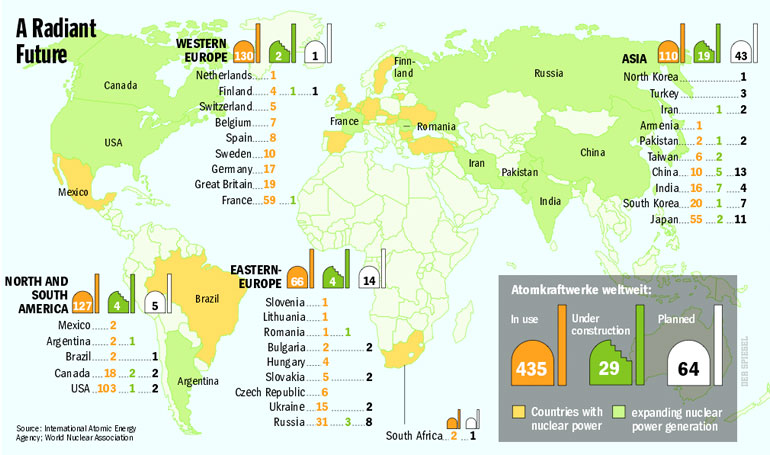
Nuclear Power
Why Nuclear Power is
not a solution for climate change:
1) If you take all of the
proven reserves of uranium and use them to power all of the world's
energy demands, they will last less than ten years, If you include
all estimated resources, uranium reserves would last about 25
years. http://www.nuclearfaq.ca/cnf_sectionG.htm#uranium_supply
Why bother? In comparison, sun energy will last for two billion years!
2) It would be 2050 before nuclear reactors can make any real impact on Australia's CO2 output and the best we could hope for is a 15-20% reduction. (Australian nuclear report) Too little too late.
In comparison reducing energy wastage and ineffiencies can save 40% within a few years.
3) Plutonium is an
artificial element produced only in nuclear reactors, which each
create about 200 kilograms of plutonium a year, whose half life is
240,000 years (that means that after 240,000 years it will still be
half as radioactive). Due to it's alpha radiation, plutonium
is one of the most poisonous substance known to man and less
than ten grams of it, if spread
evenly, is enough to give every Australian cancer.
http://www.abc.net.au/news/newsitems/200704/s1898512.htm
Would
it not be totally immoral and irresponsible to burden thousands of
future generations of Australians with having to look after vast
quantities of radioactive waste?

US nuclear waste specialist Kevin Kamps: "You can put up wind turbines in a matter of months, where it takes years and years [for a nuclear reactor], the last reactor built in the United States cost $7 billion and took 23 years to build and we need to act in the near term to address the climate crisis - we can't wait for nuclear power." www.abc.net.au/news/newsitems/200703/s1870287.htm
For
the cost of that single 1.17 GW nuclear plant about 70 NanoSolar
factories could be built producing 30GW of new solar panels each and
every year!!!
(http://www.nanosolar.com/history.htm)
B1d_v1
Global Situation
Worldwide "thousands of new nuclear reactors would have to be built to replace only 10 percent of fossil fuel energy sources," says Paulitz from the IPPNW. "That isn't just a horrifying vision for the environment, but also for security policy." http://www.spiegel.de/international/world/0,1518,483602-4,00.html
I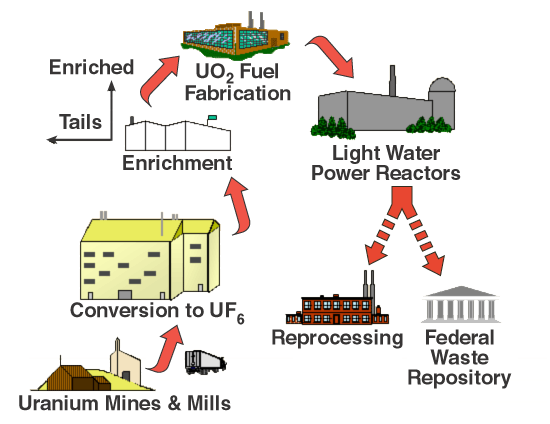 mage
on left:
mage
on left:
www.nrc.gov/
Electricity produced by nuclear power accounts for only 3 percent of global energy consumption. Even a massive increase would therefore hardly have an impact.
Construction of the third-generation EPR 1.6GW Olkiluoto 3 reactor in Finland is already 18 months behind schedule and the €3-billion (US$4 billion) price tag isn't even expected to cover the company's costs (despite many additional subsidies). A study commissioned by utility giant Electricité de France revealed that an attack with an airliner similar to those used on 9/11 would be too much for an EPR plant to withstand. http://www.spiegel.de/international/world/0,1518,483602,00.html
Nuclear – an Expensive and Dangerous Legacy
In 1996 the National
Academy of Sciences briefed the Clinton administration on the
feasibility of recycling nuclear fuel and found it to be supremely
impractical. It would cost up to $500 billion in 1996 dollars and
take 150 years to accomplish the transmutation of dangerous
long-lived radioactive toxins.
http://www.ens-newswire.com/ens/may2007/2007-05-16-insalv.asp
In
Germany's 17 atomic powerstations 126 incidents threatening safety
were recorded in 2006 alone. The Swedish atomic reactor in Forsmark
experienced a serious failure when emergency power supplies failed
after a lightning strike. Luckily the reactor could be switched off
just in time to avoid meltdown.
http://www.spiegel.de/wissenschaft/mensch/0,1518,485017,00.html
On Aug. 6, 1945, an American warplane dropped a nuclear bomb on the Japanese city of Hiroshima. An estimated 80,000 people were incinerated. In the months that followed, another 60,000 died from the effects of radiation. Thousands of others died later of diseases linked to the bombing.
B1d_v2
Nuclear Free Zones
see www.nonukescanberra.org/ and www.foe.org.au/bni.htm
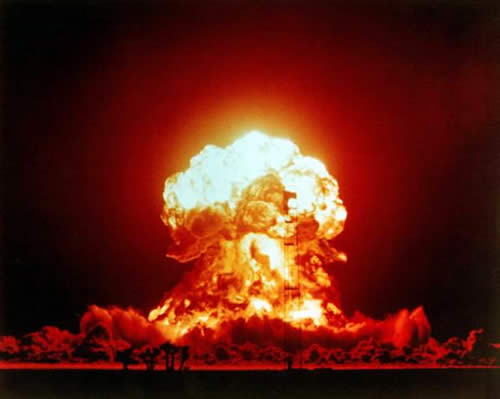
Many local authorities have declared theemselves 'nuclear-free'. The specific ramifications of this, depends on the locale in question. Local nuclear free zone declarations and signs have limited legal standing, however, they are an importnat public statement of the views of a Council and its local community.
Since 1977, over 100 Australian Local Government Authorities have declared their municipalities a Nuclear Free Zone.
In May this year Herberton Shire Council has declared itself a NFZ due to requests of the community.
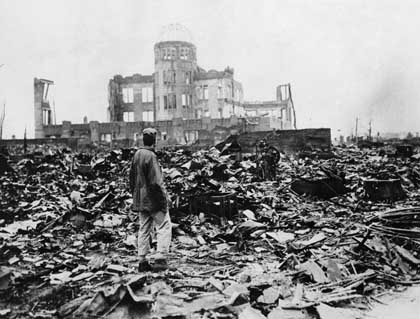
A Nuclear Free Zones is any geographic area, regardless of size, in which:
* There are no nuclear weapons, nor any facilities associeated with the development, manufacture, transport or use of nuclear weapons, component parts and associated technology
*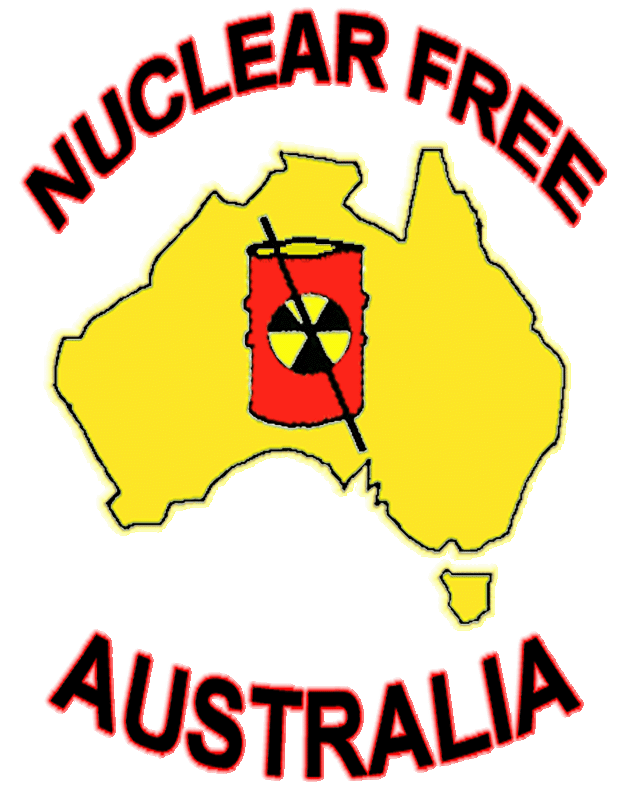
There are no nuclear power plants, including nuclear power stations,
uranium enrichment and reprosessing plants, no major radioactive
materials or wastes created, used, stored or transported
* No uranium exploration, mining or export takes place
* There are no ports of call or landing rights for any nuclear forces, including armed and /or powered vessels and aircraft.
Radio active materials used for approved medical and research purposes and some industrial applications are generally not restricted by this definition even though there may be concern about the safe use, storage, handling and disposal of these.
B1d_v3